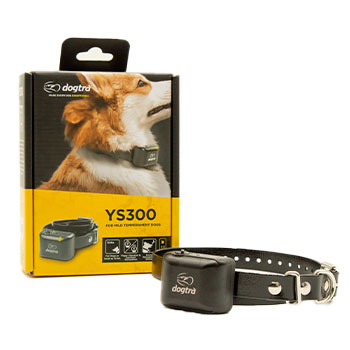September 03, 2013
We are debating on whether to purchase a bark collar for both our dogs or an Educator training collar. What would you recommend?
Full Question:
We have 2 one year old Dobermans from the same litter. We are having issues with excessive barking. They bark at every noise, person and other animal.Just to give some back ground information. We got the female first at 9 weeks. We later obtained the male when he was 7 months. We suspect that he spent much of his time in a kennel and did not receive much socialization. Therefore he is very timid and nervous around strangers and other animals. He has been displaying some fear aggression behaviors.
The female is very stubborn and was the most dominate female in the litter.
Just to mention they were just fixed 2 weeks ago as well.
We are debating on whether to purchase a bark collar for both or an Educator training collar. What would you recommend?
Thanks for your input

 Ed's Answer:
Ed's Answer:
Hi,
First – thanks for your business. It is appreciated.
Bark collars and remote training collars are two totally different things with no overlap. At least that’s how we view them. If barking is your issue get them. It sounds like you are too early for remote collar training.
In regard to your male. I wrote an article about how to socialize your puppy. The work in this article is exactly the same as resocilaizing an older dog. Follow that protocol and you will see some changes. Here is an article.
I think you will see that we take a totally different view on socializing a dog. We want and train for engagement with us and not engagement with other people or dogs.
What I would recommend is the training is The Power of Training Dogs with Food and The Power of Playing Tug with Your Dog. If you do the work in these dvds you will have the tools to get and maintain engagement. Once you have that you can use it to teach behaviors.
Bottom line is we focus all of our training up to 7 or 8 months with our young dogs in engagement training. Engagement simply means the dog is focused on us and wants what we have. If you think about it – unless you have engagement you don’t have a lot of options other than using force in your training.
In regard to the sharpness of these dogs. It becomes a training issue to accept a certain level of this at night and in the house. But it has to be limited. If it happens on walks or when we are outside we ask for engagement (once the training is there). During the foundation work we teach a very very simple command I.E. LOOK or HAND TOUCH WITH NOSE. We do it until the dog knows it and generalizes it (does it in different locations) Then when we are sure its generalized and the dog barks at something we don’t want him to bark at – we give the LOOK or TOUCH command. When he doesn’t do it (because he is barking) we correct the dog for not LOOKING or NOT TOUCHING. The dog understands that where he may not understand a correction for barking.
In addition he gets a reward for doing whats asked so it’s a WIN WIN situation.
Regards,
Ed Frawley
First – thanks for your business. It is appreciated.
Bark collars and remote training collars are two totally different things with no overlap. At least that’s how we view them. If barking is your issue get them. It sounds like you are too early for remote collar training.
In regard to your male. I wrote an article about how to socialize your puppy. The work in this article is exactly the same as resocilaizing an older dog. Follow that protocol and you will see some changes. Here is an article.
I think you will see that we take a totally different view on socializing a dog. We want and train for engagement with us and not engagement with other people or dogs.
What I would recommend is the training is The Power of Training Dogs with Food and The Power of Playing Tug with Your Dog. If you do the work in these dvds you will have the tools to get and maintain engagement. Once you have that you can use it to teach behaviors.
Bottom line is we focus all of our training up to 7 or 8 months with our young dogs in engagement training. Engagement simply means the dog is focused on us and wants what we have. If you think about it – unless you have engagement you don’t have a lot of options other than using force in your training.
In regard to the sharpness of these dogs. It becomes a training issue to accept a certain level of this at night and in the house. But it has to be limited. If it happens on walks or when we are outside we ask for engagement (once the training is there). During the foundation work we teach a very very simple command I.E. LOOK or HAND TOUCH WITH NOSE. We do it until the dog knows it and generalizes it (does it in different locations) Then when we are sure its generalized and the dog barks at something we don’t want him to bark at – we give the LOOK or TOUCH command. When he doesn’t do it (because he is barking) we correct the dog for not LOOKING or NOT TOUCHING. The dog understands that where he may not understand a correction for barking.
In addition he gets a reward for doing whats asked so it’s a WIN WIN situation.
Regards,
Ed Frawley
100% (13 out of 13)
respondents found this answer helpful


Can't find what you're looking for?








